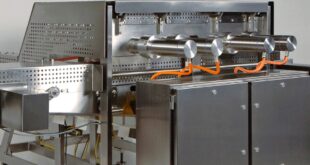Stephen Hayes explains how PC-based control systems could address our present and future water problems
Turning a tap is probably one of the first things you did this morning. A simple task that is taken for granted every day, but a lot goes on behind the scenes to make it happen.
To keep up consistent and dependable production of water, you need to keep close attention to every factor that could influence the processes, otherwise losses occur.
Utilities are facing changes worldwide. As the climate shifts, an intense, critical eye is being placed on our energy and water supplies. If the recent worldwide climate strikes are anything to go by, it’s clear this is not a passing fad.
Traditional assumptions underpinning water production are also being thrown into disarray. The UK is posed to suffer from this phenomenon, which is quite surprising. Not many would guess these stereotypically soggy isles could struggle with water supplies.
Drier summers and wetter winters are a direct, predicted consequence of climate change. These factors combine to put stress on the reservoirs that much of the UK depends on for its water, causing them to drain dramatically in the high-demand summer, and become disturbingly full through the wetter months.
This shift, and decline, in overall precipitation distribution is a worldwide phenomenon. UN reports predict that one in four people will face water scarcity by 2025.
Simply sourcing more water isn’t a workable fix. Subterranean aquifers around the world are being drained dramatically quickly, the UK being no exception, and the less-than-average rainfall isn’t enough to refill them.
Water, water everywhere
Possibly the clearest step to combat this creeping threat is to address our leaky treatment equipment and pipes. Over three billion litres of water simply disappears into the ground on its way through UK plants and pipes each day, accounting for up to one third of all water collected.
It’s difficult to imagine another processing industry where product losses that high are allowed for, but this is where our water infrastructure has ended up.
A variety of factors feed into this problem, such as century-old infrastructure, regional monopolies, and a general lack of operational oversight.
The first two issues are mostly out of the hands of the plant manager, instead being the responsibility of the company at large and national authorities, but providing management and oversight is firmly within their remit.
Connecting all the diverse parts of a water treatment plant up can be a harrowing task, but with Beckhoff’s EtherCAT I/O system feeding real-time data into the PC-based TwinCAT autonomous control system, the job is far simplified.
With proper collection, manipulation and presentation of real-time data it becomes possible to adjust production to demand, spot optimisation opportunities and catch systematic leaks as soon as they start.
If a 25% reduction in leakage losses can be achieved for just one day, that saves enough water to supply over 13,500 people for an entire year. Scaled up throughout the year, that number gets dizzyingly high.
For the moment there’s no worldwide water shortage by the strictest definitions, but this is due to change. There’s a lot of slack to be taken up in the world of water processing, for the sake of the budget, the customers and the Earth.
Stephen Hayes is managing director of industrial PC control specialist Beckhoff Automation UK.
 Engineer News Network The ultimate online news and information resource for today’s engineer
Engineer News Network The ultimate online news and information resource for today’s engineer





